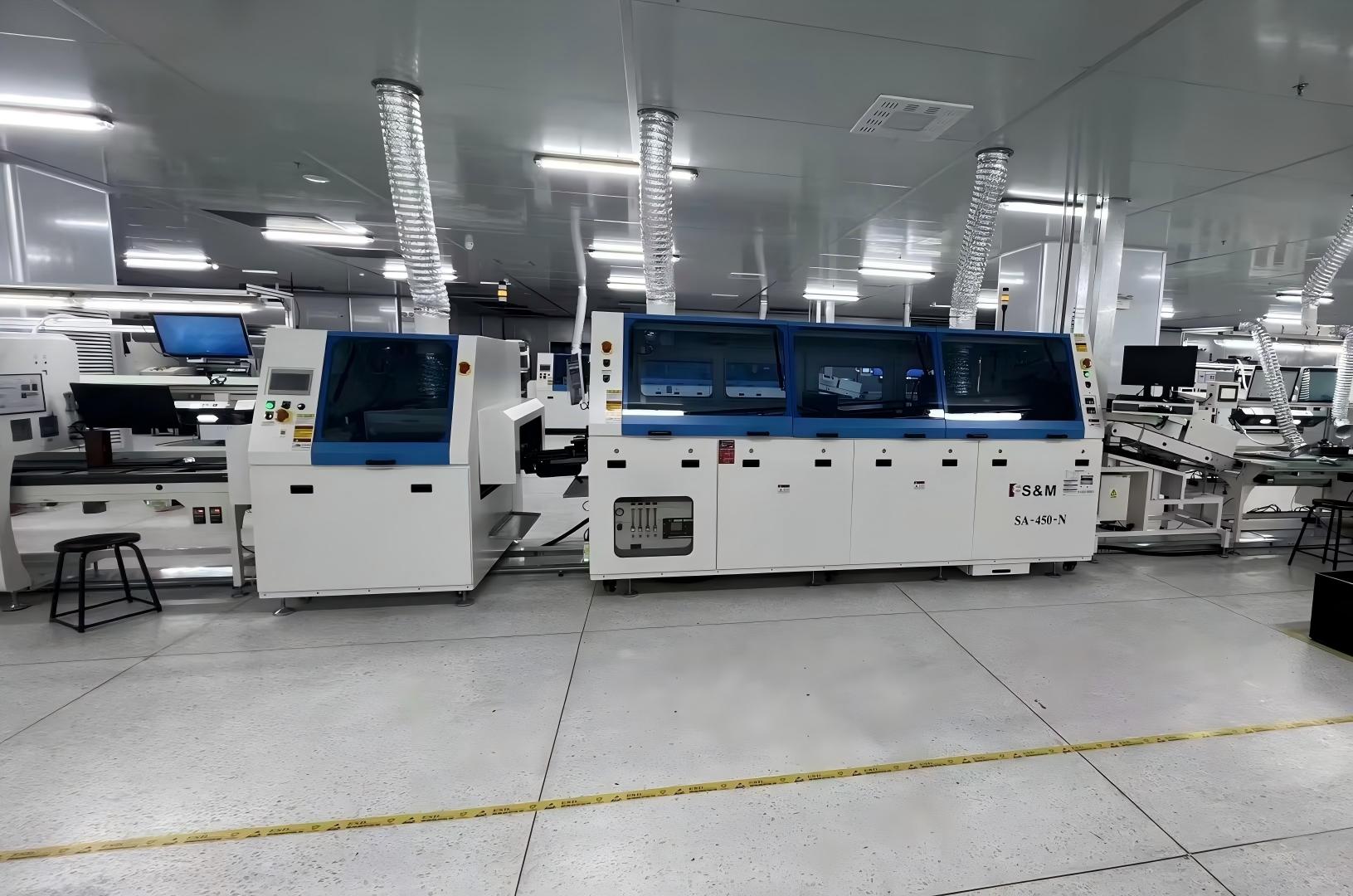
Equipment Operation Steps
1. Turn on the power switch on the control panel and start the solder pot for heating.
2. Set all parameters to standard values and turn on preheating and transport.
3. Start adding flux.
4. Turn on the spray and start continuous spraying. Check if the nozzles are clogged. If clogged, clean the nozzles with alcohol.
5. Under constant temperature, check the flatness of wave 1 and wave 2 for blockages. If blockages are found, disassemble the nozzles, clean the solder dross, and then reinstall them.
6. Perform a test run on one board, tracking the spray to determine if the size is uniform and if the preheating temperature has reached the desired flux activity. Check the wave peaks for correct height and width.
7. Check if the short solder joints and bridging on the PCB boards meet the standards. If not, adjust the spray preheating and wave soldering height and width track angles to improve yield until the yield exceeds 90%. Proceed with normal board processing only after this threshold is met.
8. Clean the nozzles with a brush and remove solder dross from the solder pot every 2 hours.
9. 1) Before leaving work, clean the furnace exterior and high-temperature glass to remove dust.
2) Flux residue from the sprayer can be cleaned with solvent, board cleaning solution, or a cloth.
3) Clean and remove solder dross from the preheated board and solder bath, and clean the furnace chamber.
4) Clean the floor around the furnace.
10. Set the automatic start-up time for the next day, and turn off the computer, monitor, and lighting; there is no need to turn off the main power supply and power controller.
Types of accidents that are likely to occur
- Mechanical damage
- electric shock
- Burns
Emergency Response Measures
1. Burns (use burn ointment)
2. Solder overflows from the furnace bath (after solidification, scrape off the solder and check if the circuit is grounded before powering on).
3. Check the transmission position (the machine must be stopped for inspection to prevent fingers from being pinched).
4. Electric shock (When checking the wiring, the machine must be stopped, and the main power switch must be turned off).
Main Control Measures
1. During normal production, the tin furnace should be refilled and tin dross removed every 2 hours on average to ensure normal flow of tin peaks.
2. Do not pour solvents, water, capacitors, or other flammable and explosive materials into the solder bath; otherwise, the solder may explode and cause injury.
Key Risk Factors
1. The flux in the nozzle contains rosin, which can remain on the nozzle over time and must be cleaned.
2. When the wave soldering is on, the solder will produce oxides, forming solder dross. If not cleaned for a long time, the solder will flow into the furnace with the dross. Cleaning is essential.
3. Over time, solder dross will form on the nozzles, causing blockages and uneven wave formation. Cleaning is essential.
4. When cleaning the furnace, the cloth should not be soaked with too much solvent. Excessive solvent can drip into the furnace and cause a fire!
